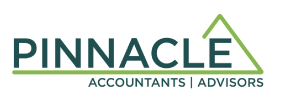
Commonly Reviewed Personal Tax Deductions by CRA
Another personal tax filing deadline has come and gone. Now is the time when you receive an unexpected letter from the Canada Revenue Agency (CRA), notifying you that they will be conducting a review of some of your expenses. The CRA reviews or audits hundreds of thousands of Canadians’ tax returns in a given year, so chances are you will be on the receiving end at some point in your life. To be prepared, here is a list of some of the most commonly reviewed personal tax items along with ways to make the review process as pain-free as possible. Although there are many, I will discuss five of the most common:
- Vehicle and travel expenses
If you are a self-employed individual with a proprietorship business, it is likely that you will be claiming some vehicle and travel expenses. These are commonly reviewed due to the fact that it is common for taxpayers to use one vehicle for both business and pleasure use, and there is often a grey line as to how much the vehicle was actually used for business.
The best way to support your vehicle deduction is with a log book detailing each trip you made for business purposes including the number of km travelled and a brief description of the purpose of the trip. CRA generally has a difficult time disputing the deduction if there is a well-maintained log book. If you do not have a log, you may not like the methods by which CRA “imputes” the amount of deduction they think you’re entitled to.
- Meals and entertainment
If you are claiming meals and entertainment as a business or employment expense, you should be able to back it up. CRA likes to review this expense because, similar to vehicle expenses, there is often a personal component to the expenses being claimed. In general, only 50% of meals are deductible, unless certain circumstances apply. Non-deductible entertainment expenses include tickets, entrance fees and golf course fees, which CRA is always on the lookout for.
CRA has strict guidelines regarding acceptable support for meals expenses. In order to make your meals deduction iron-clad, keep a receipt for each meal with the names of those in attendance at the meal along with a brief description of the business purpose of the gathering.
- Moving expenses
Moving expenses are a common claim for Canadian taxpayers. The deduction can be significant, especially if there are costs related to selling the previous home, such as realtor fees and mortgage buyout penalties. Moving deductions are also a favourite for CRA to review.
If you have a large moving expense, you should anticipate that it will be reviewed, and you should consider obtaining the following ahead of time while it may be easier to get:
- Statement of adjustments for the sale of your old home
- Receipts for utilities hookups on your new home
- Receipts for any moving transport fees (truck rental, movers’ fees, meals while on the road, etc.)
- A letter from your new employer stating that moving expenses were not reimbursed
- Allowable business investment losses (ABIL)
While many Canadians may not know what an ABIL is, it can be a great tax deduction if properly claimed. An ABIL is a loss arising on the disposition of shares of a small business corporation or a debt owed to you by a small business corporation. This loss can be used against other sources of income. It is common for the CRA to review these expenses because it can be a complicated area of tax and it is somewhat common for taxpayers to mistakenly claim an ABIL or claim an incorrect amount. If you have or think you have an ABIL you should consult with a qualified accountant.
In order to support your ABIL claim, you should keep all accounting records for the small business corporation that you are able to obtain, copies of cancelled cheques showing the original outlay for shares or a loan as well as other legal documents such as contracts, any directors’ minutes or other evidence that there is an actual loss, dissolution certificate of the corporation if applicable, and share certificates of the corporation bearing your name if applicable. There are myriad ways to have an ABIL claim disallowed so, again, please consult with a qualified accountant if you are going to claim one. They are almost always audited.
- Interest expense
It is common for taxpayers to claim an interest expense related to earning investment or other revenue. Sometimes these interest expenses can be quite large, especially if you’re employing the “Smith Maneuver” or other methods of using debt to finance investments in a tax-friendly manner. If there is a year when your investments do poorly but you claim a very large interest expense, it is common for the CRA to review your interest expense. Be prepared.
In order to back up your interest claim, the most important thing that you will have to do is show a clear line to CRA proving that the debt which is creating the interest expense was/is used to earn income. For example, if you take a loan to make investments, you should provide the loan agreement and documentation showing clearly the amount of the loan being transferred directly to an investment account on which your interest and other fees are being paid. This can be another complicated area of personal tax, so please get advice if you are concerned about whether your claim is on-side.
Written by: Chris Brien, CA/CPA

